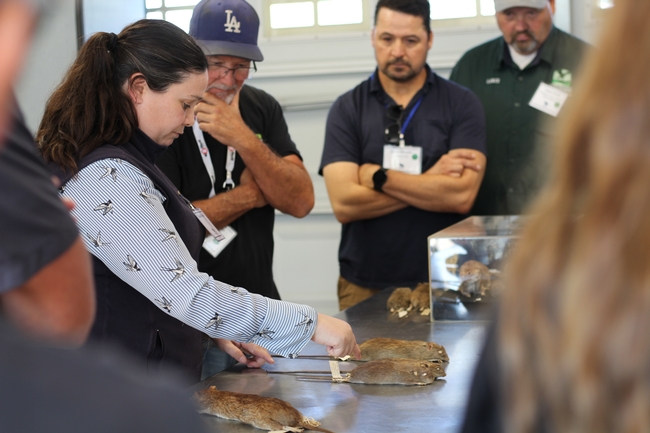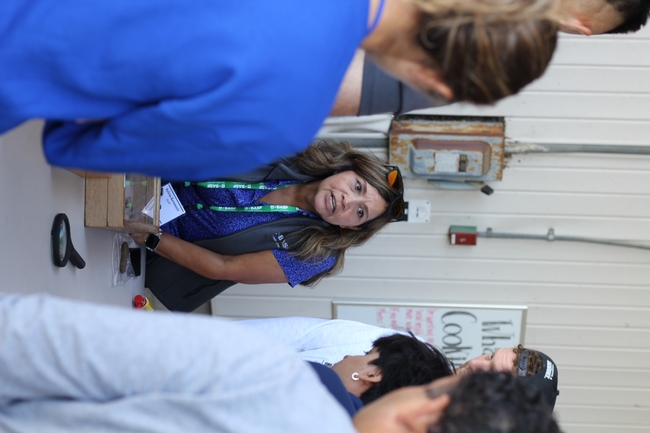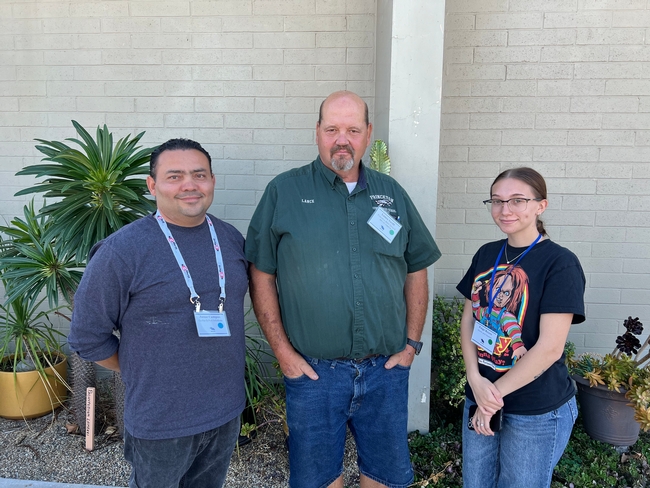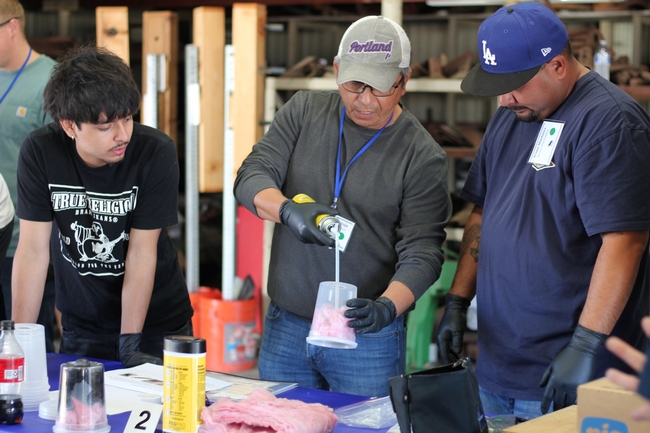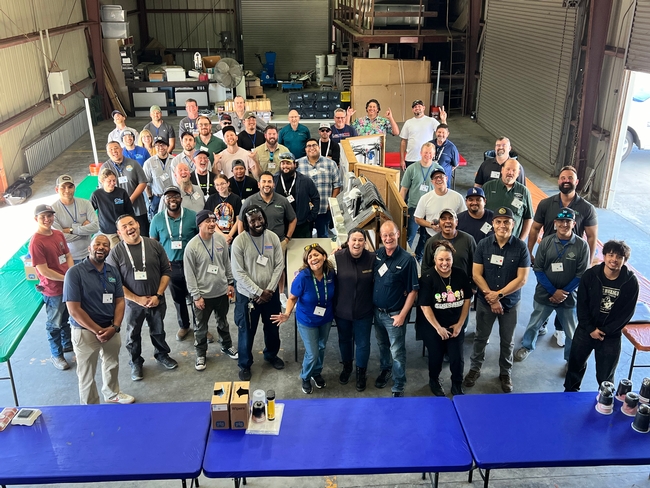Pest managers learn to do the ‘rat thing’ at Rodent Academy
Tail length, fur color, eye size, ear shape and nose structure are some of the characteristics highlighted during the “Rodent Speed Dating ID” activity at West Coast Rodent Academy (WCRA). If you thought you would find rats at WCRA, you wouldn't be wrong. The medium-sized rodents are the main attraction in teaching participants how to accurately identify different rodent species. Rotating from one table to the next, participants get to examine the taxidermic creatures and assess their bodies up close.
The unique urban rodent management workshop – co-hosted by the University of California Cooperative Extension, Target Specialty Products and Veseris – is in its eighth year, and continues to help pest management professionals better understand rodent ecology and integrated pest management including rodent disease, trapping, monitoring and much more.
From Oct. 9–11, 45 participants gathered at the UC South Coast Research and Extension Center (SCREC) in Irvine and learned from industry experts including Niamh Quinn, UCCE human-wildlife interactions advisor for Orange, San Diego and Los Angeles counties.
“West Coast Rodent Academy is a great example of the research-extension continuum. Every year we are able to bring brand-new research to our participants,” said Quinn.
Participants in attendance have professional experience ranging from zero to 40 years. Paige Reyes, who is less than a month into her role as a pesticide applicator, attended WCRA thanks to a scholarship.
On the first day of the workshop series, participants learned all about commensal rodents, or rats and mice that inhabit spaces frequented by human activity, including roof rats, Norway rats and house mice. Lectures focus on the biology, behavior, identification, trapping and excluding of such rodents.
“I had no idea how prolific some of these rodents are,” said Lance Swift, director of Maintenance, Operations and Transportation for Princeton Joint Unified School District in the greater Sacramento area. Swift has been a licensed qualified pesticide applicator for 19 years but was a first timer at WCRA.
“I live in an ag community, so I mostly deal with field mice and burrowing pests. What I really love about this training experience compared to others I've participated in is how specific they are. I'm learning a lot,” said Swift, who also received a scholarship.
On day two, participants were assigned to groups for a series of exclusion activities that required every member to secure potential entry points using materials like mesh, caulk and mineral wool. To hype participants up and establish a sense of team spirit, groups were given punny names such as “Final Pestination,” “The Great Ratsby,” “Do the Rat Thing,” and “Rats All Folks,” to name a few.
Josue Campos, who has been working in pest management for the last 22 years, said he appreciates the detailed teaching on the biology of rats during WCRA. After completing the exclusion activities with his group, the Bay Area entrepreneur said he's excited to share the skills and knowledge he gained with his colleagues back home.
“The industry has evolved, and we need to stay up to date. Coming here and learning about what doesn't work anymore and what we need to start doing is helpful,” he said. Campos has been working for a small pest-management business in San Jose, but recently started his own company called Go For It Pest Solutions.
“For mom-and-pop shops, like the business I work for, we don't always hear about opportunities like this. But when we do, we get access to good information that we can pass on to the next generation of industry leaders,” said Campos, adding that he waited a year to finally participate in WCRA. “It was worth the wait!” he said.
Later in the day, participants focused on rodenticides and research explained by Quinn. She talked about her research funded by the Department of Pesticide Regulation on monitoring rodenticide exposure in live carnivores as well as her California Department of Food and Agriculture-funded research on rodenticide resistance.
For their final activity, participants were presented a fictional rodent management issue centered on a structure at SCREC. The challenge puts the participants' new knowledge to the test and concludes with them pitching proposed solutions to three judges who represent different audiences. One judge focuses on innovation, another on technical accuracy and the third on customer satisfaction.
On the last day, participants engaged in conversations about regulation compliance and industry updates. They also learned strategies on how to communicate with the public about the nature of pest management.
To learn more about West Coast Rodent Academy, visit https://ucanr.edu/sites/WCRA/.

